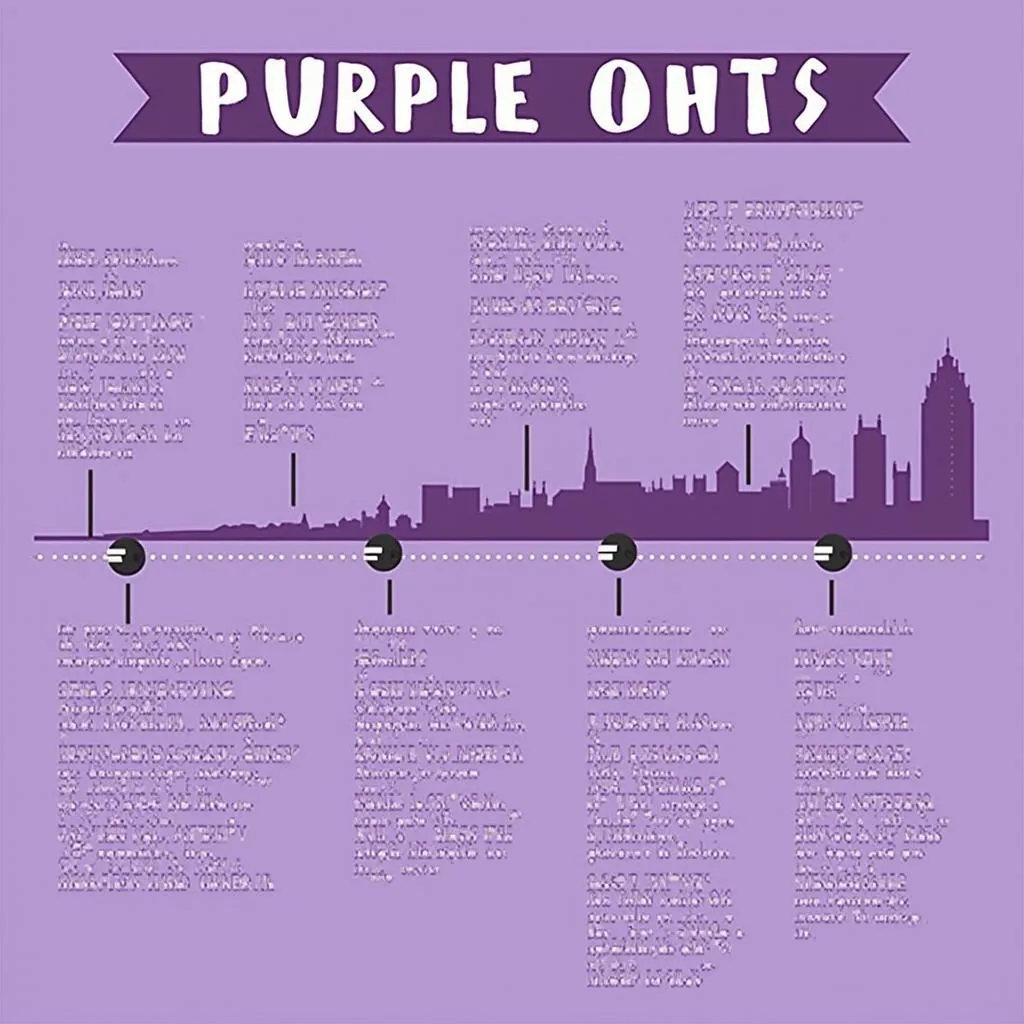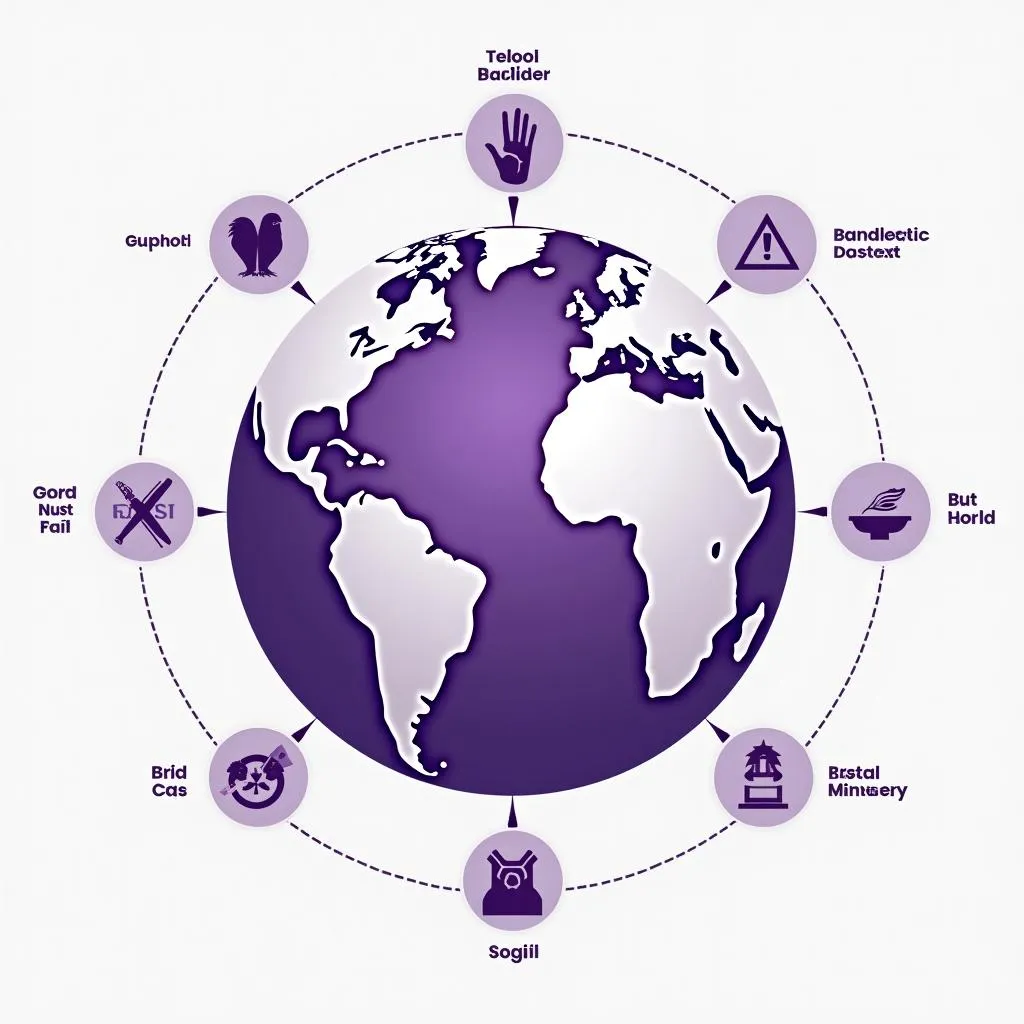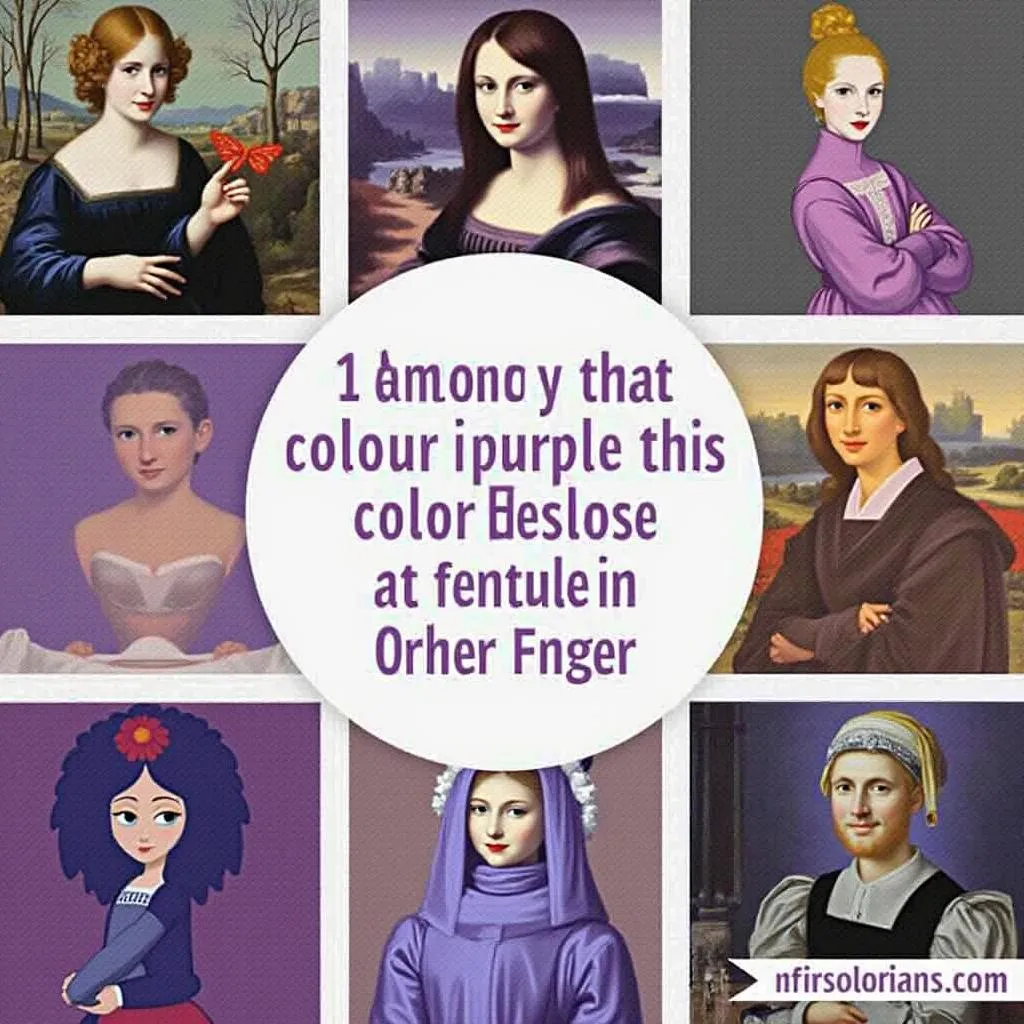Purple, a vibrant and regal hue, has held a captivating presence throughout history. The name “purple” itself has a fascinating story, intertwined with the color’s origins, cultural significance, and linguistic evolution.
The Origins of Purple: A Royal Connection
The story of purple starts with the ancient Phoenicians, who discovered a unique dye from a tiny sea snail called the murex. Extracting this dye, known as Tyrian purple, was a laborious and expensive process, making purple a luxury reserved for royalty, emperors, and high-ranking officials. The color became synonymous with power, wealth, and prestige, and this association solidified its place in history.
The Color’s Name: From Ancient Greek to Modern English
The word “purple” has its roots in ancient Greek, where it was called “πορφυρα” (porphyra). This term, derived from the Greek word for “sea snail,” aptly described the origin of the prized dye. As trade and cultural exchange flourished, the term traveled across languages, evolving into various forms.
In Latin, “porphyra” transformed into “purpura,” and eventually, into the English “purple” that we know today.
The Evolution of the Word: From Royal to Common
The word “purple” itself reflects the evolution of the color’s accessibility. While initially exclusive to the elite, the discovery of synthetic dyes in the 19th century made purple more readily available to the general public. This shift is mirrored in language, with “purple” transitioning from a symbol of royalty to a more common and versatile color name.
Purple Today: A Spectrum of Hues and Meanings
Today, purple encompasses a wide spectrum of shades, from the deep and vibrant amethyst to the soft and ethereal lavender. This diverse palette allows purple to evoke a wide range of emotions and associations.
As a color associated with both royalty and spirituality, purple signifies power, wisdom, creativity, and tranquility. It is often used to represent royalty, spirituality, creativity, and peace.
The Timeless Appeal of Purple
Whether it’s the regal heritage of Tyrian purple or the modern-day versatility of its many hues, purple continues to captivate and inspire. The color’s rich history, cultural significance, and symbolic associations make it a truly fascinating and enduring part of the human experience.
Frequently Asked Questions
Q: Why is purple considered a royal color?
A: Purple was historically an extremely rare and expensive color to produce, making it a symbol of wealth and power, worn only by royalty and high-ranking officials.
Q: Is there a difference between violet and purple?
A: While the terms “violet” and “purple” are often used interchangeably, there is a slight difference in their meanings. “Violet” typically refers to a more bluish shade of purple, while “purple” is a broader term encompassing a wider range of shades.
Q: What is the meaning of purple in different cultures?
A: The meaning of purple can vary across cultures. For example, in some Western cultures, purple is associated with spirituality and royalty, while in other cultures, it may represent mourning or sadness.
Q: What is the significance of purple in literature?
A: Purple has a rich history in literature, often symbolizing royalty, mystery, or spirituality.
Q: What are some famous examples of purple in art and design?
A: From the iconic purple of the Mona Lisa’s gown to the vibrant purple of Van Gogh’s “Starry Night,” purple has played a prominent role in art history.
 The history of the color purple and its evolution through time
The history of the color purple and its evolution through time
 The different meanings and symbolism of purple across various cultures
The different meanings and symbolism of purple across various cultures
 The color purple inspiring artists and designers through history
The color purple inspiring artists and designers through history
Purple, with its rich history and multifaceted meanings, continues to be a source of fascination and inspiration. From its regal past to its modern-day versatility, this vibrant hue will undoubtedly continue to captivate and delight generations to come.